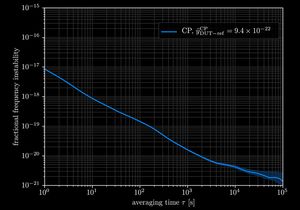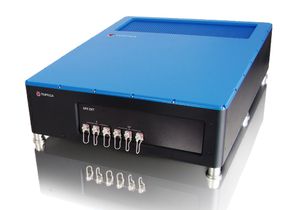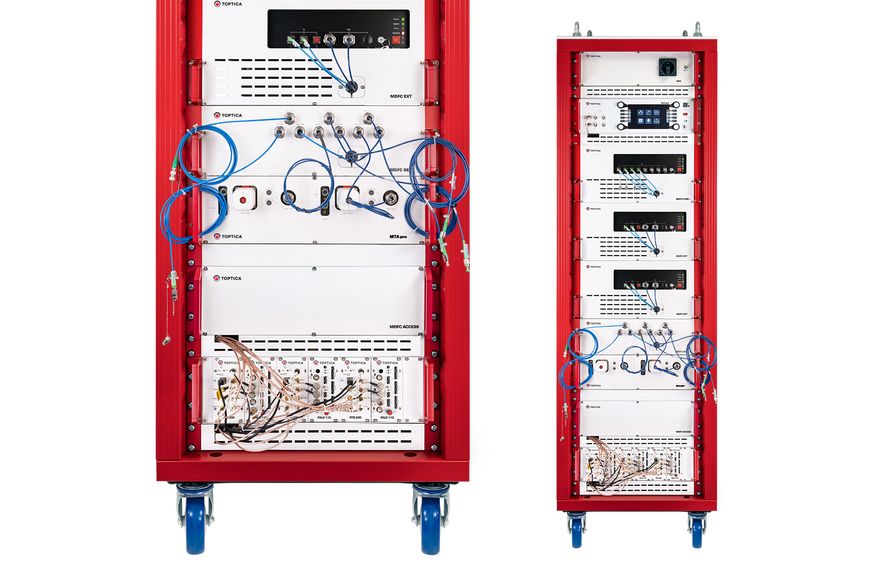Difference Frequency Comb (DFC)
Compact, robust, high-end and convenient
TOPTICA’s frequency comb product line uses our proprietary CERO-technology (Patent Number is: DE102004022037) which is based on Difference Frequency Generation (DFG). It is inherently fCEO-stable and combines high robustness, high-end performance and a convenient user-interface in a compact format.
Frequency combs are used to measure absolute optical frequencies and to stabilize cw-lasers to specific frequencies, for example in order to drive transitions in cold atomic samples. Stabilization of Tunable Diode Lasers to a frequency comb is a reliable way forward to deal with the rising complexity of optical quantum technology applications.
Download the product info Watch the webinar
Compact | Robust | High-end | Convenient
Robust: And it stays in lock … !
48 hours in the life of a DFC
Robust: And it stays in lock … !
48 hours in the life of a DFC
High-end: Stability transfer at the 10-21 level
Link to publication
Convenient: Control everything from a single window.
Watch the video (4:30)
Convenient: Control everything from a single window.
Watch the video (4:30)
DFC System Components
Complete DFC Systems
Applications of Difference Frequency Combs in Optical Clocks,
Microwave Generation and Metrology
TOPTICA offers complete laser systems as time saving and easy to use solutions for quantum technology. In optical clocks frequency combs are used as a clock work and to transfer the ultimate stability from the frequency of the best available lasers to the frequency of the clock. For low-noise microwave generation frequency combs are used to phase-coherently divide ultra-stable optical signals into the microwave domain. The high level of purity which can be achieved is very attractive for radar systems, telecommunications and time–frequency metrology. With its low-noise performance and unique robustness the DFC is the number one choice for these applications. Other applications for which the DFC is well suited include Frequency Dissemination, High-Precision Spectroscopy, Dual- and Direct-Frequency comb Spectroscopy, Optical Sensing, Distance Measurements, Interferometry, Laser Noise Characterization and many more.








